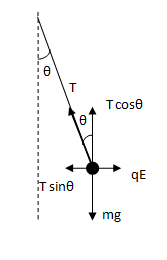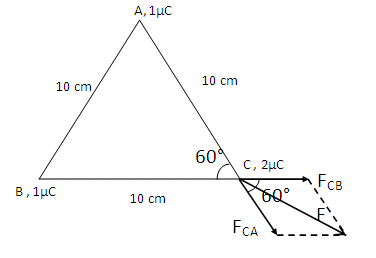Test: Electric Charges and Fields - 1 - CUET MCQ
10 Questions MCQ Test - Test: Electric Charges and Fields - 1
Three charges Q, +q and +q are placed at the vertices of a right-angled isosceles triangle as shown in the figure. The net electrostatic energy of the configuration is zero if Q is equal to

When a body is negatively charged by friction, it means the body has
Two point charges 3 × 10-6 C and 8 × 10-6 C repel each other by a force of 6 × 10-3 N. If each of them is given an additional charge of -6 × 10-6 C, then the force between them will be
The process of acquiring temporary electrification under the influence of a charged body is called
A pendulum bob of mass 80 milligrams, which is carrying a charge of 2 x 10-8 C, is at rest in a uniform horizontal electric field of 20,000 V/m. What angle (θ) will it make with the vertical?
The angle between electric dipole moment and electric field intensity due to an electric dipole at a point on its equatorial line is
An electric dipole placed in a non-uniform electric field experiences
Three charges 1 μC, 1 μC and 2 μC are respectively kept at the vertices A, B and C of an equilateral triangle ABC of side 10 cm. The resultant force on the charge at C is
A metallic solid sphere is placed in a uniform electric field as shown. Which path will the lines of force follow?
Three infinite long plane sheets carrying uniform charge densities σ1 = -σ, σ2 = +2σ and σ3 = +3σ are placed parallel to the x-z plane at y = a, y = 3a and y = 4a as shown in the figure. The electric field at point P is



 N
N ...(i)
...(i)
 N ... (ii)
N ... (ii)
 = - 1.5 × 10-3 N
= - 1.5 × 10-3 N


















